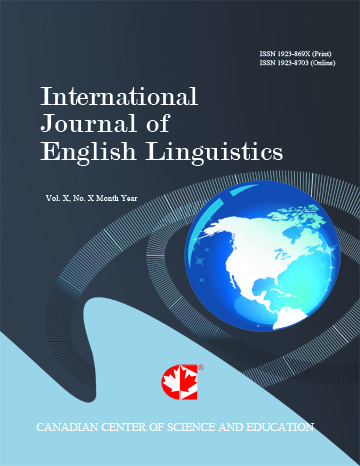Persian Learners' Syllabification of English Consonant Clusters
- Ali Akbar Jabbari
- Laila Samavarchi
Abstract
In this paper, Persian learners' syllabification of English word-initial and word-final consonant clusters was tested on the basis of the structural differences between their representations and different phonotactic constraints in both English and Persian. For this purpose, twelve children between the ages of 4-6 were experimented on by using 53 pseudo-words designed for this particular study. These pseudo-words were formed by taking into account the English phonotactic constraints. The production of the learners were recorded and transcribed. The results of this study indicate that onset clusters were mainly re-syllabified by epenthesis while the coda clusters mainly by deletion indicting transfer (negative) from Persian to English in the initial state of interlanguage.- Full Text:
 PDF
PDF
- DOI:10.5539/ijel.v1n1p236
Journal Metrics
Google-based Impact Factor (2021): 1.43
h-index (July 2022): 45
i10-index (July 2022): 283
h5-index (2017-2021): 25
h5-median (2017-2021): 37
Index
- Academic Journals Database
- ANVUR (Italian National Agency for the Evaluation of Universities and Research Institutes)
- CNKI Scholar
- CrossRef
- Excellence in Research for Australia (ERA)
- IBZ Online
- JournalTOCs
- Linguistic Bibliography
- Linguistics and Language Behavior Abstracts
- LOCKSS
- MIAR
- MLA International Bibliography
- PKP Open Archives Harvester
- Scilit
- Semantic Scholar
- SHERPA/RoMEO
- UCR Library
Contact
- Diana XuEditorial Assistant
- ijel@ccsenet.org
